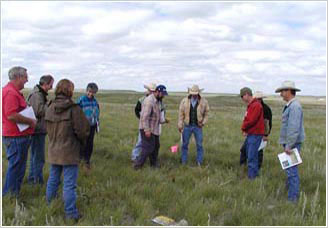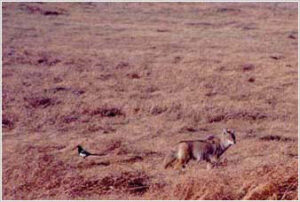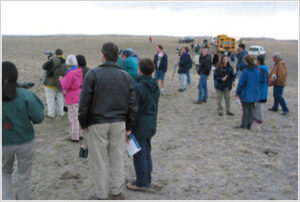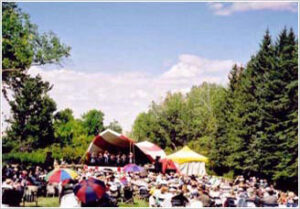In 2001, McIntyre Ranching agreed to participate in a project presented by the Alberta Conservation Association. Referred to as the Vegetation and Range Resource Inventory (VRRI), this project was developed under the Native Prairie Stewardship Program (NPSP) to provide possible grazing management strategies, conservation of biodiversity based on a range condition assessment, a range health assessment and assessment of environmental factors and current management. The goal of the NPSP is to increase awareness among ranchers/landowners regarding sustainable rangeland and wildlife habitat management practices (VRRI – Executive Summary).
The process began with Pre-Inventory Meetings in August 2001 and subsequent meetings in January and February 2002 for the purpose of reviewing the project and schedule, livestock use patterns, locations of ancillary features and discussing issues in general about the VRRI. Field work initially commenced in August 2001 but was postponed due to significant drought conditions. The project started up again in the spring of 2002 and was completed in June 2002. A McIntyre Ranch Range Management Workshop for ranch staff was held in August 2002 to promote (and educate) range condition assessment. A Post-Inventory Meeting was held in October 2002 to present preliminary findings of the VRRI.
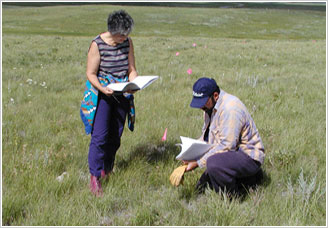
The 128 page VRRI includes an environmental background component that describes the natural region, climate, bedrock and surficial geology, soils and vegetation (including invasive species and poisonous plants). A Wildlife segment covers waterfowl and mammals, fish, amphibians, reptiles, birds and butterflies. This segment also includes surveys that have been done on deer and antelope, waterfowl, Ferruginous hawks, Sharp-tailed grouse and the grassland bird communities.
The VRRI component addresses the vegetation inventory methods of range condition, cover estimates and range sites. The health assessment addresses both the native and modified grasslands. Riparian areas, grazing capacities, current grazing system and proposed grazing management strategies are rounded off with appendices, figures, tables, photographs and maps which combined have provided an us with an extremely comprehensive and useful product. Thanks is extended to Paul Jones and Linda Cerney (and others) from Alberta Conservation Association and Jon Boyle and Amanda Bogen, Katherine Hull (and others) from Rangeland Conservation Service Ltd. for their efforts to this project.

